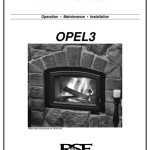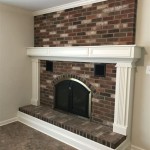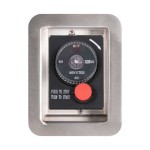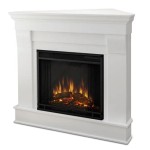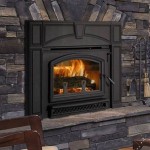Over The Fireplace TV Mount: A Comprehensive Guide
Mounting a television over the fireplace is a popular design choice for many homeowners. This placement can consolidate entertainment and create a focal point in a living room. However, successful and safe over-fireplace TV mounting requires careful planning and execution. This article will explore critical considerations, installation techniques, and potential challenges associated with this mounting option.
Assessing Fireplace Suitability
Before purchasing any mounting hardware, it is crucial to evaluate the suitability of the fireplace for TV installation. Several factors influence this assessment, including fireplace type, mantel presence and size, and wall structure. These elements directly impact the ease and safety of mounting a television above the fireplace.
The type of fireplace is a primary concern. Gas fireplaces generally produce less heat than wood-burning fireplaces, making them somewhat more suitable for over-fireplace TV mounting. However, even gas fireplaces can generate significant heat, which can damage electronic components over time. Wood-burning fireplaces, with their higher heat output and potential for soot and smoke exposure, necessitate more robust heat mitigation strategies. Electric fireplaces may pose fewer heat-related risks but still require careful consideration of wiring and mounting stability.
The presence and size of a mantel play a crucial role in deflecting heat away from the television. A sufficiently large and protruding mantel can significantly reduce the amount of heat reaching the TV screen and internal components. Without an adequate mantel, the risk of heat damage is substantially increased. It’s generally accepted that larger mantels offer better protection. The mantel should extend far enough to create a significant barrier between the fireplace opening and the television.
The wall structure behind the fireplace is a major factor in determining the type of mounting hardware needed and the overall stability of the installed television. Walls constructed of brick, stone, or concrete require specialized drilling equipment and anchors capable of supporting the weight of the TV and the mount. Drywall over wood studs presents a simpler scenario, but it is still essential to locate and securely attach the mount to the studs. Failing to properly anchor the mount to a stable wall structure can result in the TV falling, causing damage to the equipment and potentially causing injury.
Furthermore, consider the accessibility of electrical outlets and cable connections. Over-fireplace installations often require running power and signal cables behind the wall for a clean appearance. This may involve hiring an electrician to install new outlets or extend existing wiring. Planning for these connections early in the process can prevent costly and time-consuming complications later.
Selecting the Appropriate Mounting Hardware
Choosing the correct mounting hardware is paramount for a secure and aesthetically pleasing over-fireplace TV installation. Several types of TV mounts are available, each designed for specific purposes and offering varying degrees of adjustability. Understanding these differences is essential for selecting the mount that best suits individual needs and the specific characteristics of the fireplace setup.
Fixed mounts are the simplest and most economical option. These mounts hold the TV in a fixed position with minimal adjustability. They are suitable for situations where the viewing angle is optimal and no adjustments are anticipated. However, their lack of flexibility can be a drawback if the viewing angle is not ideal or if changes in viewing preferences occur in the future.
Tilting mounts allow the TV to be tilted vertically, which can help reduce glare and improve the viewing angle from below. This type of mount is particularly useful when the TV is mounted relatively high, as tilting it downwards can compensate for the elevated position. Tilting mounts offer a compromise between simplicity and adjustability, making them a popular choice for over-fireplace installations.
Full-motion mounts, also known as articulating mounts, offer the greatest range of adjustability. They allow the TV to be tilted, swiveled, and extended away from the wall, providing maximum flexibility in viewing angle. Full-motion mounts are ideal for situations where the viewing angle needs to be adjusted frequently or when the TV needs to be easily accessible for connecting cables or cleaning. However, they are generally more expensive and require more complex installation than fixed or tilting mounts.
In addition to the type of mount, it is crucial to consider the weight capacity and VESA (Video Electronics Standards Association) compatibility of the mount. The weight capacity of the mount must exceed the weight of the TV to ensure a safe and secure installation. VESA compatibility refers to the standardized hole pattern on the back of TVs that is used to attach the mount. Ensure that the mount is compatible with the VESA pattern of the TV before purchasing. Refer to the TV’s specifications or measure the hole pattern to determine VESA compatibility.
Furthermore, consider the aesthetic aspects of the mount. Some mounts are designed to be low-profile, minimizing the distance between the TV and the wall. Others are more visible and may have a decorative finish. Choose a mount that complements the overall design of the room and the fireplace.
Addressing Heat Management
Heat management represents a significant challenge when mounting a television over a fireplace. Excessive heat exposure can damage the TV's internal components, shorten its lifespan, and potentially void the warranty. Implementing effective heat mitigation strategies is therefore essential for ensuring the longevity and performance of the installed television.
As previously mentioned, a sufficiently large mantel can act as a primary heat shield, deflecting rising heat away from the TV. The effectiveness of the mantel depends on its size, shape, and material. A wider and deeper mantel provides greater protection. Consider the material of the mantel. Non-combustible materials like stone or concrete offer greater heat resistance than wood. Adding a heat shield extension to an existing mantel can enhance its heat-deflecting capabilities.
Another strategy is to install a heat deflector above the fireplace opening. Heat deflectors are designed to redirect heat away from the wall and the television. They are typically made of metal and can be custom-fabricated to fit the specific dimensions of the fireplace. Heat deflectors can be particularly effective for wood-burning fireplaces, which generate higher levels of heat.
Maintaining adequate ventilation around the TV is also crucial. Ensure that there is sufficient space between the back of the TV and the wall to allow for airflow. Avoid blocking any ventilation openings on the TV. Consider installing cooling fans behind the TV to actively circulate air and dissipate heat. These fans can be powered by USB or AC adapters and can be set to run automatically when the TV is turned on.
Regularly monitor the temperature behind the TV. Use a thermometer to measure the temperature near the back of the TV and compare it to the manufacturer's recommended operating temperature range. If the temperature exceeds the recommended range, take steps to further reduce heat exposure. This may involve adjusting the fireplace damper, adding more insulation, or installing additional cooling fans.
Consider the placement of the TV itself. Mounting the TV as high as possible above the fireplace can help reduce heat exposure. However, this must be balanced with the optimal viewing angle. A general guideline is to position the TV so that the center of the screen is at eye level when seated. If mounting the TV higher is necessary to mitigate heat, consider using a tilting mount to compensate for the elevated position.
Cable Management and Aesthetics
Achieving a clean and organized appearance is crucial for an over-fireplace TV installation. Visible cables can detract from the overall aesthetic and create a cluttered look. Effective cable management techniques are essential for concealing wires and creating a professional-looking installation.
Running cables behind the wall is the most visually appealing solution. This involves creating openings in the wall behind the TV and near the floor to route cables through. Consider using in-wall rated cables that are designed to meet fire safety standards. Electrical code often mandates the use of specific cabling for in-wall applications. It is recommended to consult with an electrician to ensure compliance with local codes.
Install cable pass-through plates to conceal the openings in the wall. These plates provide a clean and finished look and prevent dust and debris from entering the wall cavity. Choose plates that match the color of the wall for a seamless appearance. Cable pass-through plates come in a variety of sizes and configurations to accommodate different types of cables.
Use cable ties, straps, or sleeves to bundle and organize cables behind the TV. This helps prevent tangling and makes it easier to access cables in the future. Consider using Velcro straps, which are reusable and adjustable. Labeling each cable can further simplify troubleshooting and maintenance.
If running cables behind the wall is not feasible, consider using cable concealers or raceways to hide the wires. Cable concealers are plastic channels that attach to the wall and provide a protected pathway for cables. They are available in a variety of colors and sizes and can be painted to match the wall. Cable raceways offer a more flexible solution, allowing cables to be easily added or removed. Both options provide a neat and organized look, minimizing the visibility of cables.
Consider using a power bridge to extend the electrical outlet behind the TV. A power bridge is a device that allows you to safely run electrical wiring behind the wall without needing to hire an electrician. It consists of two boxes, one that plugs into an existing outlet and another that provides a new outlet behind the TV. Power bridges are typically designed to meet UL safety standards.
Finally, consider the placement of other components, such as cable boxes, gaming consoles, and Blu-ray players. These can be located in a media cabinet near the fireplace or in a separate room. If located in a media cabinet, ensure that the cabinet is properly ventilated to prevent overheating. Using a universal remote control can simplify operation by controlling all devices with a single remote.

Can I Mount My Tv Above The Fireplace
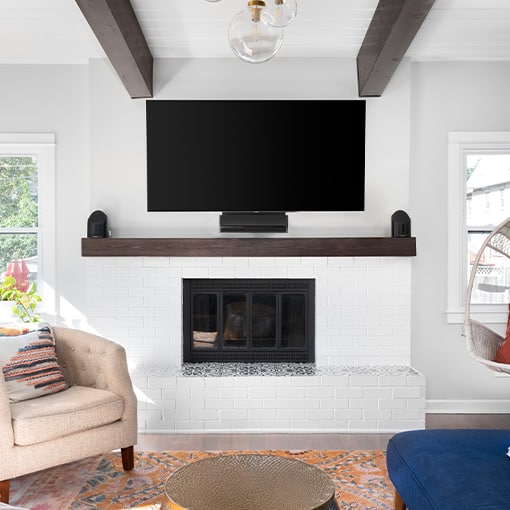
Can I Mount My Tv Above The Fireplace

Tmo100a Mount Tv Above Fireplace Mountable 55 Inches To 65 Tranquil

Tackling My First Mantelmount Mm720 Pull Down Tv Mount Install

The Ultimate Guide To Mounting Your Tv Over Fireplace 4 Easy Steps Patriot Chimney

How To Mount A Tv Over Fireplace Vertical Chimney Care

Mounting A Tv Above The Fireplace Mantelmount

Dynamic Mounting S Down And Out Swivel Mount Review Tv Mounted Above Fireplace Over Wall

Safely Mount A Tv Above An Electric Fireplace Touchstone Home S Inc

Is It Safe To Mount Your Tv Above The Fireplace Chimney And Wildlife

